
How to Use Mega 2560 R3: Examples, Pinouts, and Specs
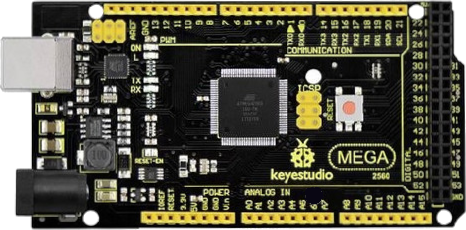
 Design with Mega 2560 R3 in Cirkit Designer
Design with Mega 2560 R3 in Cirkit DesignerIntroduction
The Keyestudio Mega 2560 R3 (part ID: KS0002) is a versatile microcontroller board based on the ATmega2560 chip. It is designed to support complex projects with its extensive array of digital and analog I/O pins, multiple UARTs for serial communication, and ample memory. This board is an excellent choice for applications such as robotics, home automation systems, and large-scale LED installations.
Explore Projects Built with Mega 2560 R3
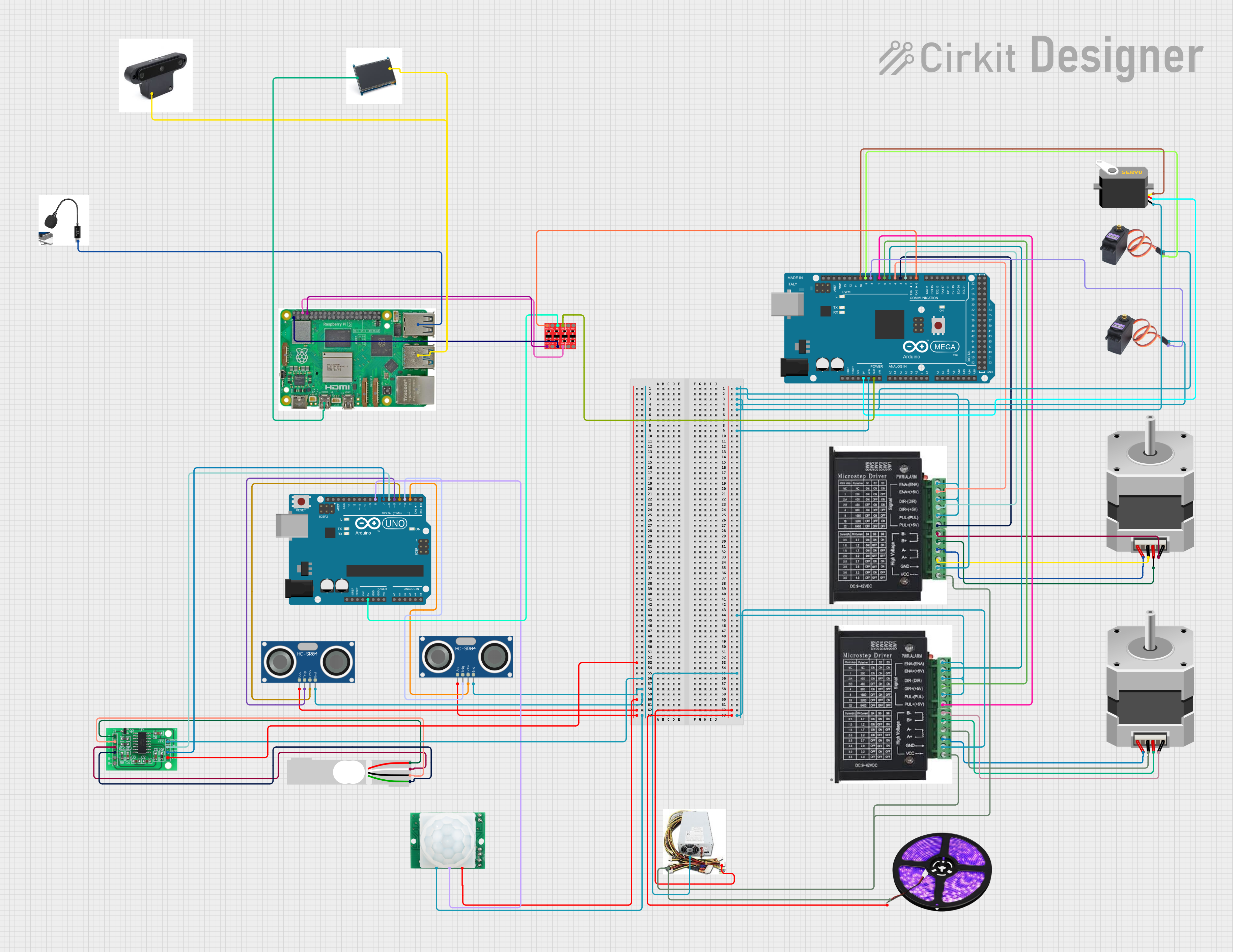
 Open Project in Cirkit Designer
Open Project in Cirkit Designer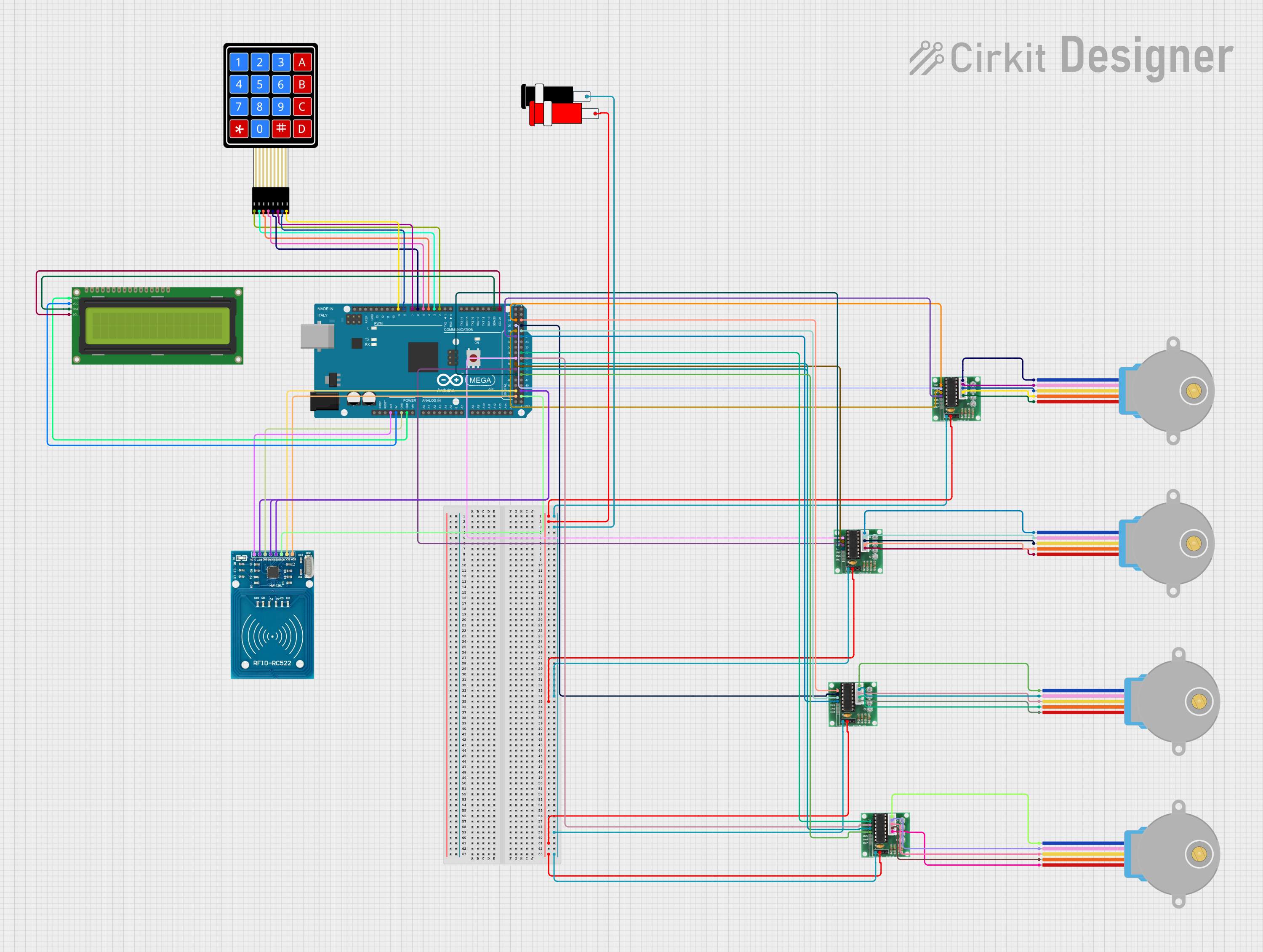
 Open Project in Cirkit Designer
Open Project in Cirkit Designer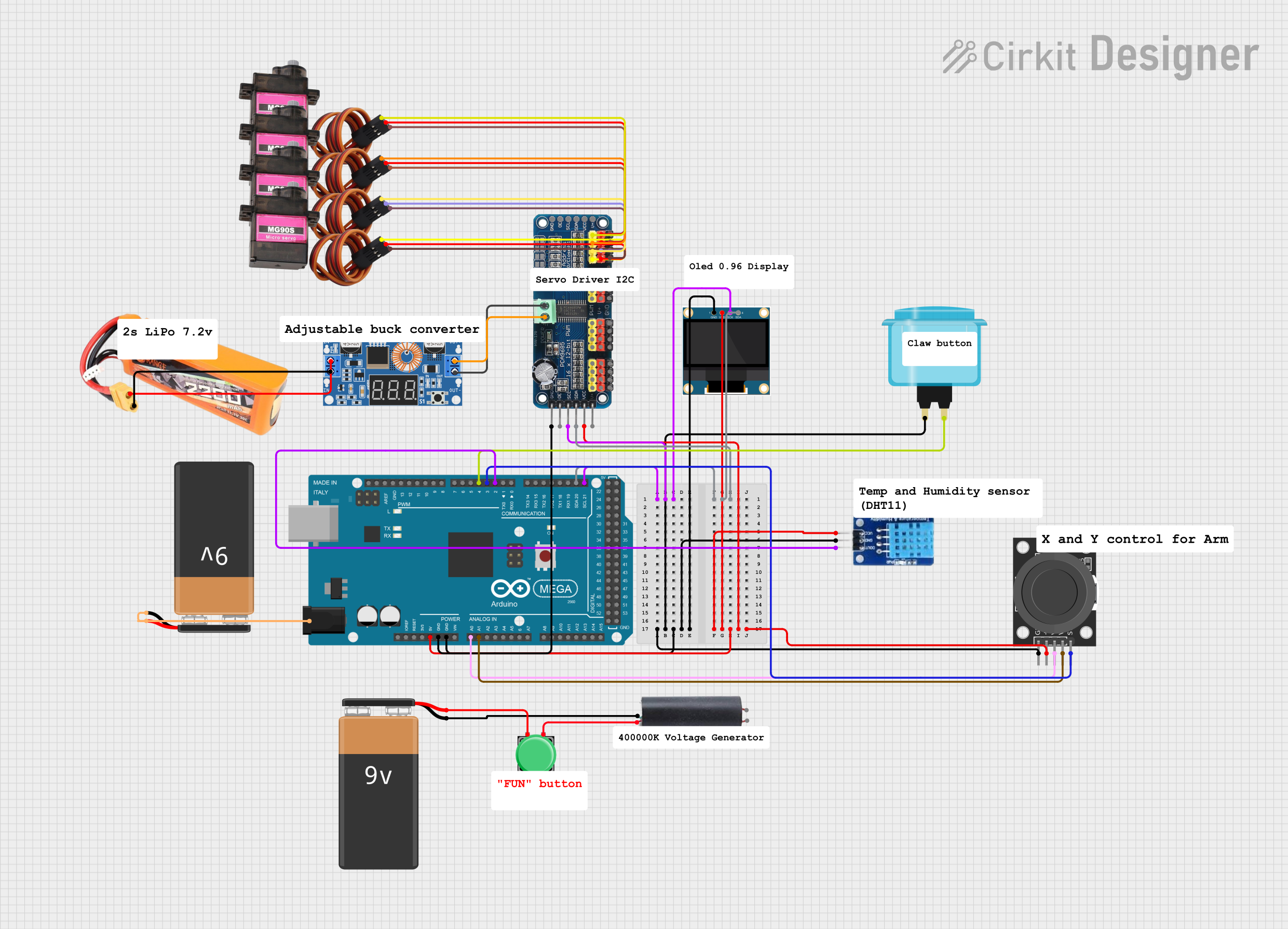
 Open Project in Cirkit Designer
Open Project in Cirkit Designer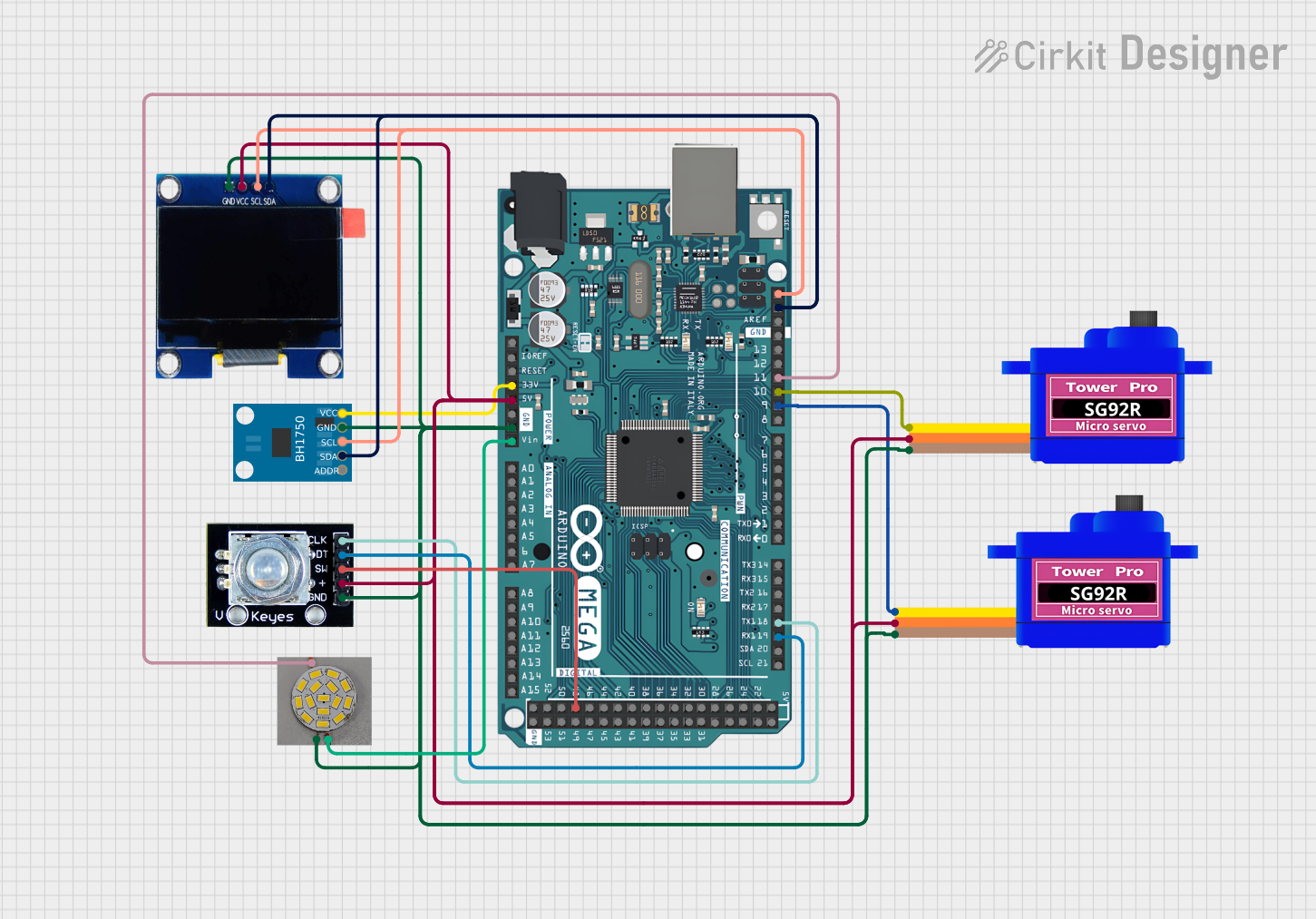
 Open Project in Cirkit Designer
Open Project in Cirkit DesignerExplore Projects Built with Mega 2560 R3

 Open Project in Cirkit Designer
Open Project in Cirkit Designer
 Open Project in Cirkit Designer
Open Project in Cirkit Designer
 Open Project in Cirkit Designer
Open Project in Cirkit Designer
 Open Project in Cirkit Designer
Open Project in Cirkit DesignerTechnical Specifications
General Features
- Microcontroller: ATmega2560
- Operating Voltage: 5V
- Input Voltage (recommended): 7-12V
- Input Voltage (limits): 6-20V
- Digital I/O Pins: 54 (15 provide PWM output)
- Analog Input Pins: 16
- DC Current per I/O Pin: 20 mA
- DC Current for 3.3V Pin: 50 mA
- Flash Memory: 256 KB of which 8 KB used by bootloader
- SRAM: 8 KB
- EEPROM: 4 KB
- Clock Speed: 16 MHz
- LED_BUILTIN: Pin 13
Pin Configuration
| Pin Number | Function | Description |
|---|---|---|
| 1-54 | Digital I/O | Digital input/output pins |
| 1-15 | PWM Output | PWM output capable pins |
| A0-A15 | Analog Input | Analog input pins |
| 0, 1 | Serial 0 (RX, TX) | UART 0 (Rx0, Tx0) pins for serial communication |
| 19, 18 | Serial 1 (RX, TX) | UART 1 (Rx1, Tx1) pins for serial communication |
| 17, 16 | Serial 2 (RX, TX) | UART 2 (Rx2, Tx2) pins for serial communication |
| 15, 14 | Serial 3 (RX, TX) | UART 3 (Rx3, Tx3) pins for serial communication |
| - | ICSP Header | In-Circuit Serial Programming header |
| - | Reset Button | Resets the microcontroller |
Usage Instructions
Setting Up the Board
- Connect the Mega 2560 R3 to your computer using a USB cable.
- Ensure that the board is selected in your IDE (e.g., Arduino IDE) under the "Tools" > "Board" menu.
- Select the correct serial port under "Tools" > "Port".
Writing a Basic Sketch
Here is a simple example of how to blink the built-in LED on the Mega 2560 R3:
// Define the LED_BUILTIN pin as an output.
void setup() {
pinMode(LED_BUILTIN, OUTPUT);
}
// Turn the LED on and off in a loop.
void loop() {
digitalWrite(LED_BUILTIN, HIGH); // Turn the LED on
delay(1000); // Wait for a second
digitalWrite(LED_BUILTIN, LOW); // Turn the LED off
delay(1000); // Wait for a second
}
Best Practices
- Always disconnect the board from power sources before making or altering connections.
- Use a current-limiting resistor when connecting LEDs to output pins.
- Avoid supplying voltage to any I/O pin exceeding the operating voltage (5V) to prevent damage.
Troubleshooting and FAQs
Common Issues
- Board not recognized: Ensure the USB cable is properly connected and the correct drivers are installed.
- Sketch upload fails: Check the selected board and port in your IDE. Press the reset button on the board and try again.
- Unexpected behavior in circuits: Verify connections and ensure that power supply voltages are within the specified limits.
FAQs
Q: Can I power the Mega 2560 R3 with more than 12V? A: While the board can accept an input voltage up to 20V, it is recommended to use between 7-12V to prevent overheating and potential damage.
Q: How many devices can I connect to the serial ports? A: You can connect one device per UART, giving you the ability to have four separate serial devices connected.
Q: What is the purpose of the ICSP header? A: The ICSP (In-Circuit Serial Programming) header is used for programming the microcontroller with an external programmer.
For further assistance, consult the Keyestudio community forums or contact technical support.